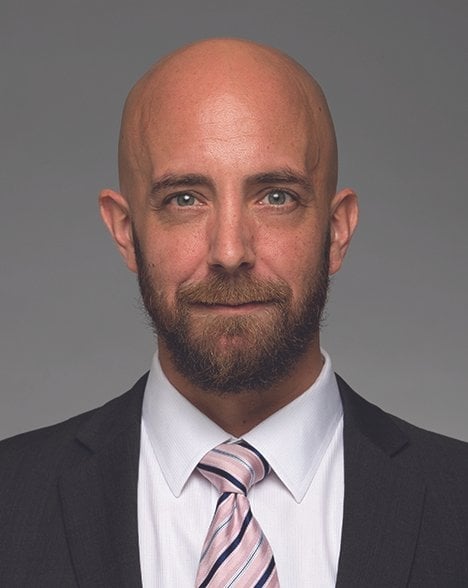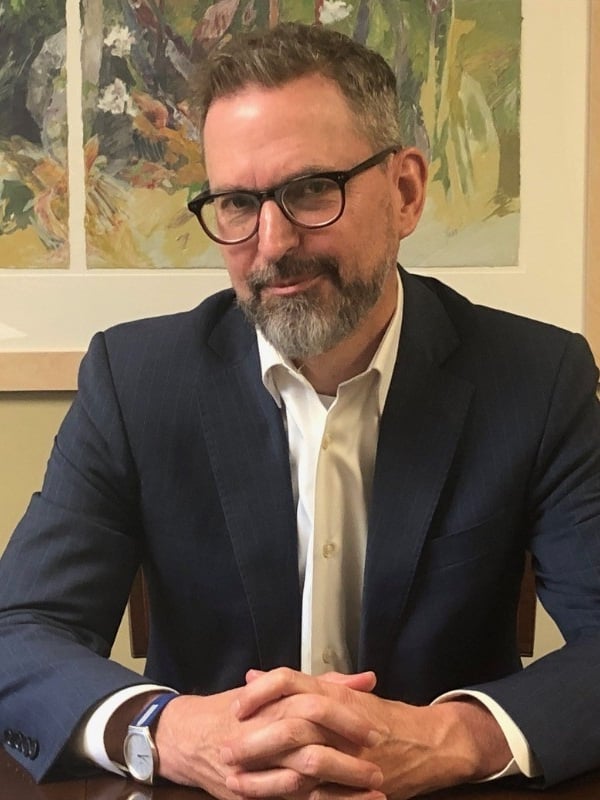You have /5 articles left.
Sign up for a free account or log in.

Drs Producoes/Getty Images
More than half of bachelor’s degree holders are underemployed a year after graduation, and roughly four in 10 are still underemployed a decade later. How worrying are those rates? And what can colleges and universities do to decrease them?
A recent episode of The Key, Inside Higher Ed’s news and analysis podcast, explored those questions. It examined “Talent Disrupted,” a report released this spring by Strada Education Foundation and the Burning Glass Institute that adds important nuance to the larger discussion about postcollege outcomes for graduates.
Joining the discussion were Carlo Salerno, managing director at the Burning Glass Institute and an author of the aforementioned report, and Gary Daynes, founder and principal of Back Porch Consulting and a former professor and senior administrator at several private nonprofit colleges.
An edited transcript of the conversation follows.
Inside Higher Ed: Can you give the audience a high-level overview of “Talent Disrupted”?
Salerno: We were trying to build on a report from 2017 on underemployment—this notion that some folks go to college and then work in areas where they don’t end up needing the degree they earned. We wanted to take advantage of better data and more rigorous methodology and really try to understand to what extent underemployment is a thing and where it is happening the most and what kinds of levers institutions have at their disposal to buttress against it.
Inside Higher Ed: Do we have better data now to start really answering important questions like these?
Salerno: We definitely have better data than we had a dozen years ago. And there’s a general culture now where we really want to measure as much as we can, and drill down and get nuanced here. We can talk more granularly about things like where people went to school and the background characteristics of those individuals, and programs that certain institutions may offer, and figure out if those things are drivers of underemployment.
Inside Higher Ed: Gary, you published a LinkedIn post a few days after the report came out with analysis of the Burning Glass Institute/Strada report. Can you tell us what you wrote and how you approach this underemployment topic?
Daynes: I came to know about this report in the way a lot of folks did, through media coverage. I was looking at a Bloomberg article that was headlined, “Half of college graduates are working high school level jobs.” I thought, “I work in higher ed; I had better read the report,” and I would encourage everybody to read it. It’s a super-rich report.
This report and colleges and universities tend to talk past each other when they’re talking about employment outcomes. A lot of small colleges, which is where I tend to work, use [the National Association of Colleges and Employers’] First Destination survey to measure graduate employment. That doesn’t ask questions at nearly the level of sophistication this report does, about alignment between degree and line of work or sector in which you’re working and job qualification. We ask, “Six months out, are you employed full-time or in graduate school? Are you employed in a field related to your discipline?” If yes, we say, “Good, we did something important.”
This report’s [definition of underemployment] is different from the way campuses talk about it. A student might think, “I’m underemployed if I got a job that doesn’t use all my skills,” but they might think, “I’m fully employed if my degree helped me get this job,” even if it’s a position that doesn’t require a college degree, the analysis Burning Glass uses.
So the question for me is, how can colleges and universities take this report, translate it into their own language and do a better job serving students—both in helping them think about what work should be like for them, and helping them find jobs that meet their employment goals, whether that’s by discipline, by compensation or by quality of life?
Inside Higher Ed: Carlo, how does underemployment fit into the traditional ways we’ve thought about how colleges are doing preparing graduates for what comes after college? We’ve been focused mostly on things like student debt and income levels recently. Why is underemployment important to look at, and how does it enrich the sophistication of the underlying conversation?
Salerno: I’ve worked in the space long enough to remember when higher education was focused on the access agenda and gradually pivoted over time into a completion agenda. Underemployment to me is like the third leg of the education-to-workforce stool. We can get people into school, and we can get them through a degree program. But what does it say if we can’t get them into jobs afterwards?
It’s an important policy question we should be asking ourselves: Why are people getting college degrees but not working in jobs that require a college education? Some of that we can explain by environmental factors. Students make choices about what degrees they want to pursue. Sometimes those degree programs may not be in high demand where they live. Sometimes people are willing to move, sometimes people are unable to move; those factors can shape people’s ability to get jobs.
But we also know that institutions have levers that they can pull as well. Even if they can’t stave off underemployment, they can protect and shield against it. We know from the report that programs that are more math intensive tend to be great shields against underemployment. Internship opportunities, practical applications to work, tend to be logical, great shields against underemployment as well.
All of this really comes back to a big policy question that higher ed has not answered: How do we take the training we’re trying to get so many people to have and make sure it is being practically applied?
Inside Higher Ed: Tell us a bit more about how you’ve defined underemployment in here.
Salerno: We’re really focused on the market for bachelor’s degree recipients. We’re asking, are these individuals working in jobs where the preponderance of people in the same job have a bachelor’s degree or not? A good stylized, if not typical, example is your Starbucks barista. We don’t expect that more than 50 percent of coffee baristas have bachelor’s degrees; it’s not the kind of job we feel is college necessary.

Carlo Salerno, Burning Glass Institute
So if you were to find yourself with a bachelor’s degree working as a barista, we would say that you’re underemployed. You have a degree and you’re working in a job that you don’t need the degree for. I think it’s a good, stylized way to describe what underemployment is here. Our approach is aligned to the Federal Reserve and what other folks who try to measure underemployment capture. We focus on a very specific cohort of students—for the 10-year measures we’re looking specifically at folks who graduated college in 2012, not long after the Great Recession.
Inside Higher Ed: Gary, do you think underemployment is a big issue for higher education?
Daynes: Yes, it is a big issue, whether you take the definition the Burning Glass report uses or a broader, more common-sense definition, in that lots of people feel like their college education hasn’t prepared them well for the work they are in. This report lands at a time when both the Republican Party and the Democratic Party are focusing more on employment outcomes and compensation as a measure of higher education. This report ought to open the eyes of colleges and universities and generate a richer discussion about how employment outcomes fit into the overall work of their institution.

Gary Daynes, Back Porch Consulting
Disciplines ought to be asking that same question about themselves. For instance, public safety as a field has a high level of underemployment, because you could become a police officer without a bachelor’s degree. Faculty and institutions that have that program are asking, what does it mean to be well employed for somebody who’s earning a degree in this field? And what can we do as an institution to help make sure that our graduates meet our definition of what it means to be well employed?
Inside Higher Ed: Carlo and I have talked over the years about the extent to which career outcomes ought to be a central, or the dominant, way of judging the value of time spent in college. My view is that it’s important, but ideally not the sole one. I believe we’ve overemphasized that postcollege salary number. The hope is that we get more sophisticated and richer definitions of what it means to be successful. That’s to me what’s most useful about the underemployment data: enriching the set of measures we might use to gauge how well colleges are doing. Carlo, does that square with how you think about it?
Salerno: It does. And one other thing that’s important to this part of the conversation is we ask colleges and universities to design or modify programs to be responsive to labor market needs, and they have to try to estimate demand and predict which degree programs may have value. They can’t always do that with a 100 percent guarantee that the new credential they’re building is going to have value. It’s an iterative process. We ask them to do something that potentially puts them in a position of looking like they’re failing, when they’re really trying to innovate.
Daynes: To build off that, it’s also the case that most colleges and universities don’t have a well-thought-through approach to work. That is, you don’t take a course in general education that’s about the philosophy of work or how you find meaning in it, with the exception of work colleges or institutions that come out of a religious tradition that has a point of view about what work should mean in people’s lives. They’re not preparing students to have their own expectations for what work looks like, to ultimately get the sort of job that aligns with who they are. Some of the underemployment data is an indication that schools have failed to do enough on the basic topic of, how do you make a meaningful life out of your work? And, therefore, how do you choose disciplines that align with those sorts of things?
Inside Higher Ed: The report avoided oversimplistic thumbs-up or thumbs-down, “this is too high” or something. How do you think about the results you found? Is the goal just seeing those figures drive down over time?
Salerno: The truth of the matter is, we don’t know what a “good” underemployment rate looks like. This is not like a natural rate of unemployment, for example, where we can say there’s some magic number we should be striving toward. There’s always going to be some level of underemployment in the marketplace. That said, when you see numbers showing 52 percent of bachelor’s degree recipients are underemployed within a year after leaving school, one out of two instinctively feels high. It seems even worse when you track out 10 years and you still see more than 40 percent. These numbers just feel like they should be able to be driven down. We just don’t know exactly what’s propping them up to know which levers might help us bring them down.
Inside Higher Ed: I’ve always been concerned about overemphasis on really short-term indicators. So I found the 10-year-out numbers more troubling than the near-term one, as well as the connection the report found that those who start off that way are much likelier to stay in that position.
Daynes: The tables at the end of the report—which show institution type, Pell eligibility, selectivity—should open people’s eyes. Institutions that have a high proportion of Pell-eligible students tend to also have a higher proportion of underemployed students than you might expect. There may be all sorts of explanations; it may be where the institution is or the disciplines that are offered, or a set of constraints under which low-income students makes decisions about work. But those are significant findings for an industry that is doing its best to try to provide access to better economic futures for the people who participate in it.
Inside Higher Ed: Most institutions may not have underemployment data for their own graduates. What should a vice president for student success or a provost or president who might feel responsible for ensuring the postcollege success of their graduates be thinking and doing about this?
Salerno: There are things we know can really help institutions shield their graduates from risks of underemployment. One of the more profound findings in the study is that the likelihood of being underemployed drops almost by half if you have an internship. That makes sense: internships do an excellent job of aligning work while you’re in college and training for the opportunity you could have later. It builds relationships, it builds work culture, it gives people a better understanding of how the training they’re getting applies in the working world.
We know majors matter. We know that math-intensive degrees tend to be great shields against underemployment. But realistically, if I’m one of those enrollment management or student affairs folks looking to design success, I’m thinking about building transparency. I want to build better-informed students. I want students to understand the job opportunities in their local region. I want them to pick majors that have great earnings and great employment outcomes. I want them to be aware that those options exist.
A lot of times, students don’t fully understand what a good wage is, a good field. And they don’t understand what good employment opportunities may look like. Being able to educate students and their families about the opportunities that are available with different programs is the first step in making sure that people make good choices about degree programs. Colleges are great at delivering [a] high-quality education experience, where they can protect against underemployment the best, [are] making sure the students who come to their school are choosing degree programs that are going to provide them value afterwards.
Inside Higher Ed: Gary, what would your recommendations be for institutional leaders and everybody in the education process about how to underemployment-proof their graduates?
Daynes: Certainly, schools need to be more serious in taking up these questions and learning the language that’s being used in policy circles about unemployment and underemployment. We need to get much better at seeing where our graduates go and staying in touch with them so we can answer the question “Where do your graduates work?”
Inside Higher Ed: It seems like this report renders statements we sometimes hear, like “98 percent of our graduates are employed,” much less meaningful, no?
Daynes: I would absolutely agree. The other thing we often highlight is one or two students who’ve got an inspiring sort of job. There’s nothing wrong with that; you want your current students to see possibilities in the future. But that’s not sufficient. Carlo’s point about internships, and the report’s point about career services, are essential, though they’re not going to fix it in and of themselves.
Salerno: At the end of the day, there is a perception about college value right now that the national media is rightfully obsessed with. One way that you can address the “Is college valuable?” discussion is to drive down cost and make it more affordable. The other side of that coin is to make sure the payoff of that college experience is worth it.
Underemployment is a fine example of a topic where universities and colleges and policymakers have a better sense now of levers that they can pull that can boost college-level employment and reduce underemployment. As you drive underemployment down, and more students find themselves in work that is aligned with their education, you would expect perceptions about the value of college to go up as well.









